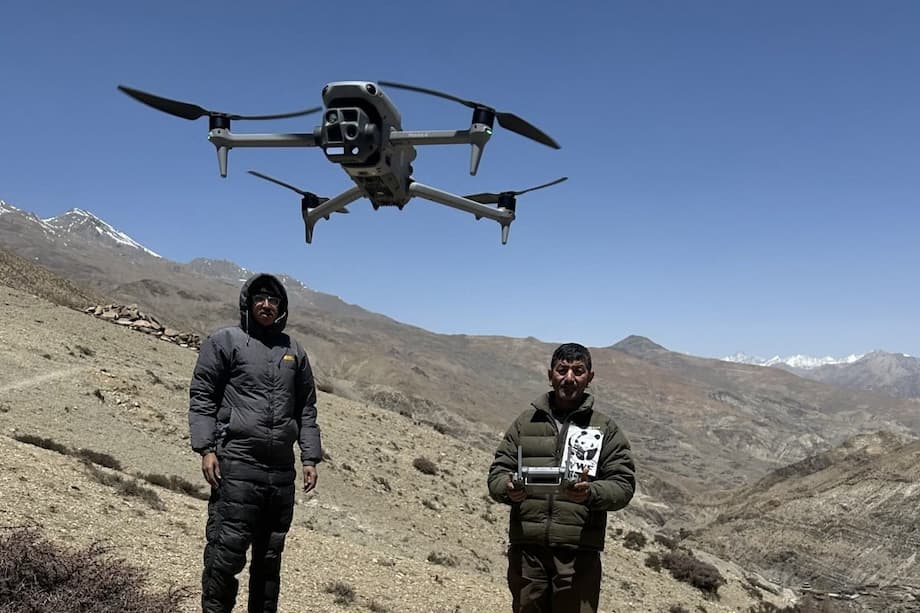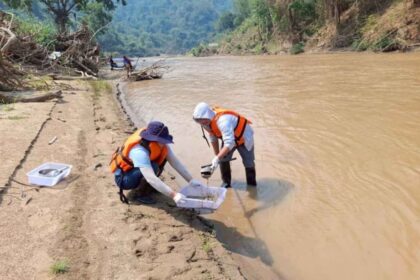Introduction: A New Era for Nepal’s Wildlife Protection
In the dense jungles and grasslands of Nepal’s southern lowlands, a quiet revolution is underway. Once reliant on foot patrols, bicycles, and even elephants to monitor vast national parks, conservationists now have a powerful new ally: drones. These unmanned aerial vehicles (UAVs) are rapidly becoming indispensable tools in the fight to protect some of the world’s most endangered species, including Bengal tigers, one-horned rhinoceroses, and Asian elephants. As Nepal faces mounting threats from poaching, habitat loss, and human-wildlife conflict, drones offer a technological leap that is reshaping conservation strategies and outcomes.
- Introduction: A New Era for Nepal’s Wildlife Protection
- Why Nepal Turned to Drones for Conservation
- How Drones Are Used in Nepal’s National Parks
- The Impact: Successes and Challenges
- Regional and Global Context: Nepal’s Leadership and Lessons
- Community Involvement: The Human Side of High-Tech Conservation
- Looking Forward: The Future of Drones in Conservation
- In Summary
Why Nepal Turned to Drones for Conservation
Nepal’s national parks, particularly Chitwan and Bardia, are biodiversity hotspots. They are home to globally significant populations of tigers, rhinos, elephants, and critically endangered gharials (a unique crocodile species). Yet, these parks also face relentless pressure from poachers and encroaching human settlements. Traditional patrol methods, while essential, are often slow, dangerous, and limited by the vastness and inaccessibility of the terrain.
In 2012, Nepal became one of the first countries in Asia to test conservation drones, thanks to a partnership between WWF Nepal and international researchers. The initial UAVs, developed by ecologist Lian Pin Koh and biologist Serge Wich, were lightweight, hand-launched planes equipped with cameras and GPS. With a wingspan of two meters and a range of up to 25 kilometers, these drones could fly for 45-50 minutes, capturing high-resolution images and videos of remote areas that rangers struggled to reach on foot.
General Krishna Acharya, Director of Nepal’s Department of National Parks and Wildlife Conservation, emphasized the strategic advantage drones provide:
“Technologies like non-lethal UAVs could give park rangers a vital advantage against armed poachers.”
The cost—about $2,500 per drone—made them accessible even for a developing country with modest conservation budgets.
How Drones Are Used in Nepal’s National Parks
Today, drones are deployed for a range of critical tasks:
- Monitoring Wildlife: Drones conduct aerial surveys to track the movements and health of tigers, rhinos, elephants, and other species. They can also help detect new or elusive species in hard-to-reach habitats.
- Combating Poaching: UAVs patrol park boundaries and hotspots, providing real-time video feeds that help rangers respond swiftly to suspicious activities. Their presence alone acts as a deterrent to poachers and illegal loggers.
- Human-Wildlife Conflict Mitigation: In areas where wildlife strays into villages, drones help volunteers and park staff locate and safely guide animals back to the forest, reducing the risk of injury or death for both people and animals.
- Habitat and Environmental Monitoring: Regular drone flights document changes in land use, deforestation, and encroachment, providing vital data for long-term conservation planning.
- Population Censuses: High-resolution imagery and AI-powered object detection allow for accurate, non-invasive counts of animal populations, such as swamp deer and gharials.
Gokarna Jung Thapa, head of geoinformatics and technology at WWF Nepal, described drones as a “crucial conservation tool” that complements and enhances traditional methods.
Technological Advancements: From Simple Cameras to AI and Thermal Imaging
The first generation of conservation drones in Nepal were relatively simple, but the technology has evolved rapidly. Modern drones now feature:
- Thermal Cameras: These allow for night-time surveillance and the detection of animals or humans hidden by dense foliage.
- Vertical Take-Off and Landing (VTOL): VTOL drones can operate in confined spaces and rugged terrain without the need for runways.
- Geo-tagging and Extended Flight Times: Advanced drones can fly for over an hour and cover up to 30 kilometers, capturing detailed, geo-referenced imagery.
- Artificial Intelligence (AI): Deep learning algorithms, such as YOLO (You Only Look Once), enable real-time object detection and species identification from drone footage. Recent studies have shown over 92% precision in detecting and counting animals like swamp deer, even without expensive hardware.
These innovations have made drones more effective and accessible, allowing even resource-limited conservation teams to harness cutting-edge technology.
The Impact: Successes and Challenges
Success Stories: Deterring Poachers and Saving Species
Since the introduction of drones, Nepal has reported notable successes in wildlife protection. Park rangers and army personnel, trained to operate UAVs, have been able to monitor vast areas more efficiently and safely. The ability to gather photographic evidence has strengthened law enforcement and prosecution of wildlife crimes. In Chitwan National Park, for example, drones have helped reduce poaching incidents and contributed to the recovery of rhino and tiger populations.
Community-based groups, such as the Community-Based Anti-Poaching Units (CBAPU) in Bardiya, also use drones alongside other tools like camera traps and laser lights to prevent human-wildlife conflicts. Volunteers respond to alerts and help drive animals away from villages, minimizing casualties on both sides.
Challenges: Social, Ethical, and Technical Hurdles
Despite their promise, drones are not a panacea. Their use raises important social and ethical questions:
- Privacy and Trust: Aerial surveillance can cause fear or suspicion among local communities, especially if drones are mistaken for military devices. Conservationists must work to build trust and ensure transparency about how data is collected and used.
- Community Relations: Over-reliance on technology may reduce face-to-face interactions between rangers and villagers, potentially undermining long-standing relationships crucial for conservation success.
- Data Security: Sensitive information about wildlife locations or community activities must be protected from misuse or hacking.
- Technical Limitations: Drones are affected by weather, battery life, and the need for skilled operators. High-tech features like thermal imaging can be expensive and require ongoing maintenance.
Experts caution that drones should complement, not replace, traditional conservation efforts and community engagement. As one report from the scientific literature notes,
“Technological solutions may not address underlying social and political challenges.”
Regional and Global Context: Nepal’s Leadership and Lessons
Nepal’s pioneering use of drones has inspired similar initiatives across Asia and beyond. Neighboring countries like India and Bangladesh have begun deploying UAVs for wildlife monitoring and anti-poaching operations. In Bangladesh, drones recently helped locate illegal bird traps, leading to successful enforcement actions. Globally, drones are now used to monitor orangutans in Indonesia, elephants in Kenya, and even whales in Canada.
International competitions, such as the Wildlife Conservation UAV Challenge, encourage the development of affordable, user-friendly drones tailored for conservation needs. As David Wilkie of the Wildlife Conservation Society observed,
“How do you move beyond enforcing the law and catching guys with ivory to preventing them from shooting the elephants in the first place? Can we use drones to do that? That gets people’s ears pricked up and they begin to think, oh my gosh, this could really be a game changer.”
Nepal’s experience demonstrates that with the right partnerships, training, and community involvement, even countries with limited resources can harness advanced technology for conservation.
Community Involvement: The Human Side of High-Tech Conservation
Technology alone cannot save Nepal’s wildlife. The success of drone-based conservation depends on the dedication of rangers, volunteers, and local communities. In Bardiya, the CBAPU’s 3,300 members work tirelessly to protect both people and animals, often at personal risk and with limited resources. They use drones not just for surveillance, but as part of a broader strategy that includes education, alternative livelihoods, and advocacy for victim compensation.
The Tharu Indigenous community, with its deep-rooted traditions of coexistence with wildlife, plays a crucial role in shaping conservation practices that are both effective and culturally sensitive. As modernization and habitat loss increase the risk of conflict, integrating technology with grassroots knowledge and participation is essential for sustainable outcomes.
Looking Forward: The Future of Drones in Conservation
The rapid evolution of drone technology holds great promise for conservation in Nepal and worldwide. As drones become more affordable, durable, and intelligent, their applications will expand—from real-time population censuses to habitat restoration and even emergency response during natural disasters.
However, the path forward requires careful consideration of ethical, social, and environmental impacts. Conservationists must balance the benefits of surveillance and data collection with respect for privacy and community rights. Ongoing research, transparent policies, and inclusive decision-making will be key to ensuring that drones serve as tools for both wildlife protection and social good.
In Summary
- Nepal has emerged as a leader in using drones for wildlife conservation, particularly in Chitwan and Bardia national parks.
- Drones help monitor endangered species, combat poaching, reduce human-wildlife conflict, and gather vital ecological data.
- Technological advances—such as thermal imaging and AI-powered detection—have made drones more effective and accessible.
- Success depends on integrating drones with traditional patrols, community engagement, and ethical safeguards.
- Nepal’s experience offers valuable lessons for other countries seeking to protect biodiversity with limited resources.
- Ongoing challenges include privacy concerns, technical limitations, and the need for sustainable funding and community support.












